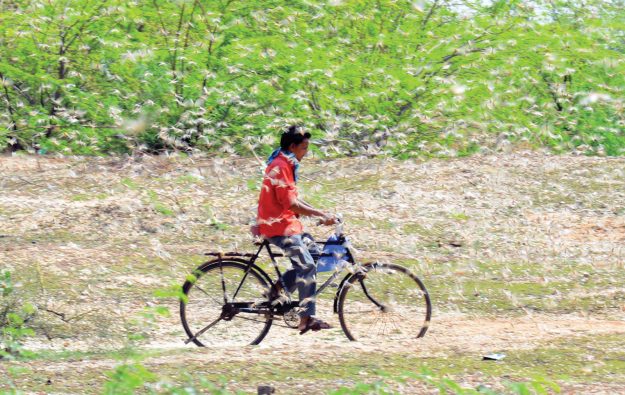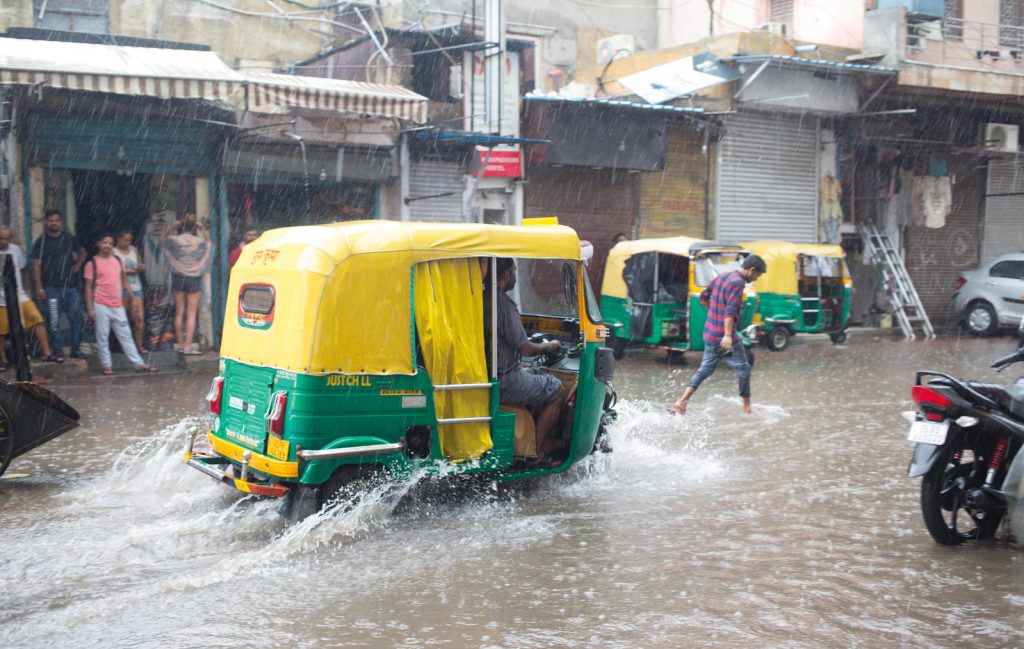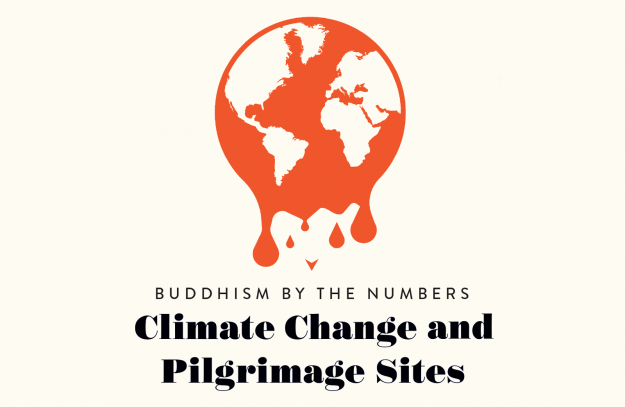Just as religious tourism has emerged as an economic force in poor regions of India and Nepal, the COVID-19 pandemic has put a chill on the Buddhist pilgrimage circuit. But the question about tourism’s return may be a matter of if rather than when, because another danger threatens to forever alter the holy sites: the devastating effects of climate change.
On his deathbed, the Buddha told his followers about four places “that a pious person should visit and look upon with feelings of reverence” (Digha Nikaya 16.5): his birthplace in Lumbini, Nepal; the site of his enlightenment in Bodhgaya, India; the site of his first sermon in Sarnath, India; and his place of death in Kushinagar, India. The call to this sacred journey, which nearly died out in the 12th century with the decline of Buddhism in India, was revived during the colonial era and further invigorated from the mid-20th century to the present. National and state governments have embraced the route to boost the area’s economic prospects, developing the circuit to attract more visitors, and millions of domestic and international pilgrims have visited the four sites in recent years.
But as global warming accelerates, these four Buddhist pilgrimage sites—all inland, in low-lying developing areas in subtropical climates—are expected to face higher temperatures, floods, and droughts. Several scientific studies have predicted that climate change will have an outsized impact on the Himalayas and the Indian subcontinent, where temperatures will warm faster than the global average despite the region’s low emissions. Residents and pilgrims alike have been already forced to adapt to changing conditions. As warming trends continue, they may reshape pilgrims’ visitation patterns, destabilize agriculture, limit food and water availability, bring new pests and diseases, and threaten the livelihood, health, and lives of local communities.
But there is some good news: the four landlocked pilgrimage sites are not directly exposed to cyclones or rising sea levels.
“The primary climate impact [on these areas] will be changes in temperature and rainfall,” which are both predicted to increase and become more variable, said Dr. Mandira Shrestha, a civil engineer and the program coordinator of climate services at the International Centre for Integrated Mountain Development (ICIMOD).
Global average temperatures have risen approximately 1.1°C above preindustrial levels, and radical steps to curb emissions would be needed to keep warming below 1.5°C by 2100, according to the UN; “business as usual” scenarios forecast a devastating rise in temperature to 2.6 to 4.1 degrees of warming by 2100. But even in the best-case scenario of a 1.5°C rise, “in the Hindu Kush Himalayan region it would be likely at least 0.3°C higher,” Dr. Shrestha told Tricycle.
This disproportionate impact is compounded by the limited ability of developing nations to cope with the tremendous challenges of climate change. The region’s already hot climate cannot warm much more before its warmest days become deadly for humans and other living creatures. During heat waves, the wet-bulb temperature (a combined measure of temperature and humidity) could reach fatal levels with much greater frequency—100 to 250 times more often in the tropics and subtropics by 2080, according to a 2017 Columbia University study, which also found Northeast India to be one of the regions most at risk.
Hotter temperatures are already a fact of life on the pilgrimage circuit. In June 2019, India, Nepal, and Pakistan saw record-breaking heat waves with highs of 113°F, killing 184 people in the state of Bihar, home to Bodhgaya and the ruins of the ancient Buddhist university of Nalanda. [In May 2020, temperatures in Bihar reached 110 °F.]
Rainfall has increased but become more variable, a trend expected to accelerate in the coming decades: periods of drought are interspersed with bursts of intense rainfall that inundate low-lying areas of the Indo-Gangetic Plain, and the onset and duration of the annual monsoon are becoming increasingly unpredictable. The recent boom in development along the circuit is expected to exacerbate the situation, with nonabsorbent pavement intensifying floods and an increased demand for water contributing to greater droughts. Flooding and drought in turn reduce annual harvests, a dangerous scenario in densely populated and heavily agricultural states like Bihar and Uttar Pradesh.
Visitors should be aware of their “impact on these fragile places” and make “mindful choices.”
The Nepalese monk Ven. Metteyya Sakyaputta, vice chairman of the Lumbini Development Trust, told Tricycle that during the last few decades of construction in the area Lumbini’s “tree cover disappeared very quickly, [and] wetlands and water bodies were reduced.” And in the summer of 2019, he said, “most of [Lumbini’s] taps ran dry and the local government had to impose a water ban for irrigation.” Tap water is no longer potable, so the town is littered with disposable water bottles. (This situation led to a new initiative: employing local women to recycle these water bottles and other plastics into meditation blankets.) Meanwhile, at Tergar Monastery in Bodhgaya, monk Karma Timmi observed that the water table has dropped and fluctuated noticeably in recent years, forcing the monastery’s residents to dig deeper wells. Scientists believe the water table changes are due to water overuse, land use changes, and drought.

A hallmark of climate change, experts have warned, is the onset of simultaneous and cascading disasters. For instance, warming seas trigger more frequent and more powerful storms, like cyclone Amphan, which in May 2020 killed at least 106 in eastern India and Bangladesh and put survivors at risk of contracting the coronavirus in crowded shelters. To make matters worse, Amphan and other tropical storms create ideal breeding conditions for locusts, like the massive swarms that originated in Yemen this year and devoured crops across northwestern India.
What does the circuit’s vulnerability to climate change mean for potential pilgrims? Ven. Metteyya Sakyaputta thinks that visitors should be aware of their “impact on these fragile places” and make “mindful choices” (searching out ethical travel agents and hotels, for instance). He hopes that the pilgrimage sites will “become a source of inspiration for people in this region to seek a sustainable and peaceful way of life.”
♦
Related: Buddhism by the Numbers: Climate Change and Pilgrimage Sites
Thank you for subscribing to Tricycle! As a nonprofit, we depend on readers like you to keep Buddhist teachings and practices widely available.

